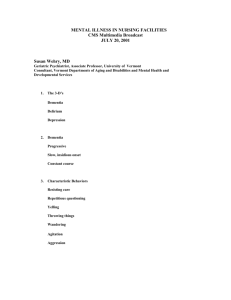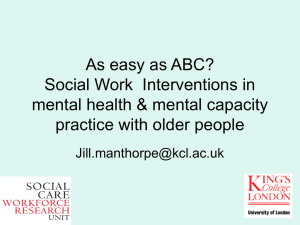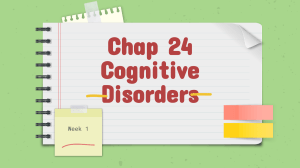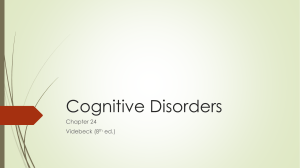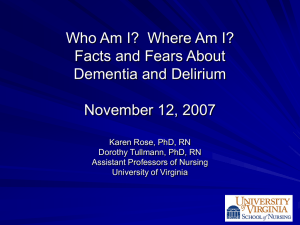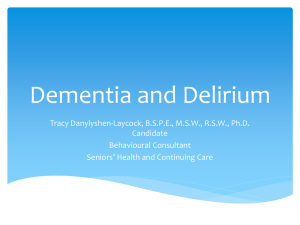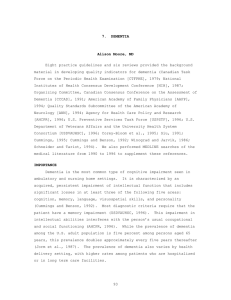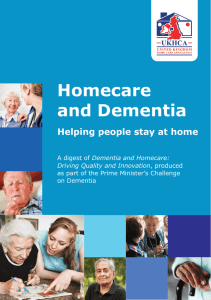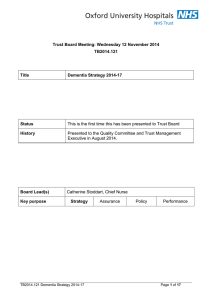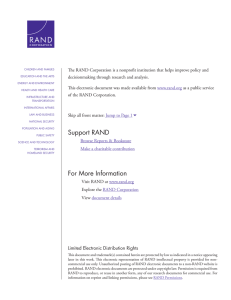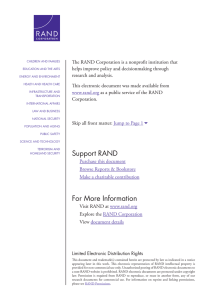SCOPE of COGNITION :
advertisement
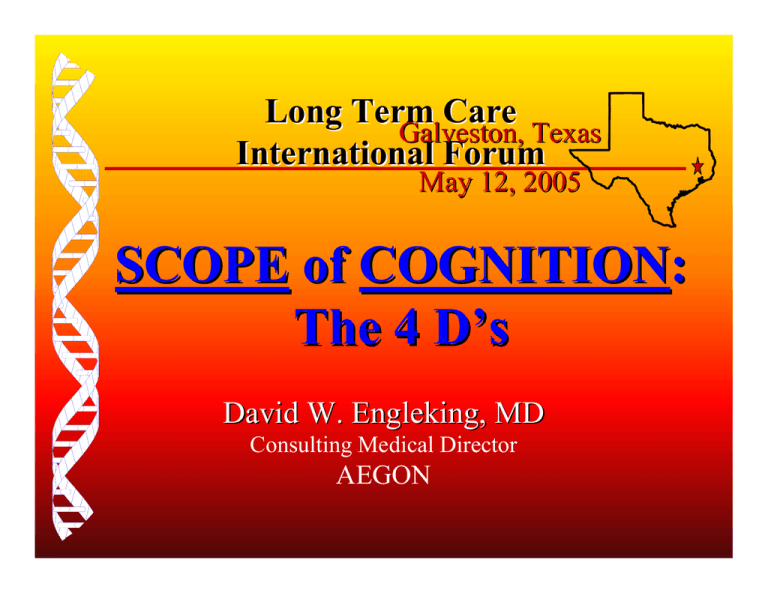
Long Term Care Galveston, Texas International Forum May 12, 2005 SCOPE of COGNITION: The 4 D’s David W. Engleking, MD Consulting Medical Director AEGON The Four D’s Delirium Dementia Depression Drugs 2 Overview of Cognitive Disease • Accounts for 15% of >65 y/o population • May be either acute or chronic confusional state • Greatest error is confusing dementia with the other 3 D’s • Greatest reward is reversibility when possible 3 Criteria for Differentiation • Onset of the Process: Slow or Fast? • Course of the Process: Steady or Labile? • Nature of the Process: Attention or Memory Related? • Response to treatment: Immediate or Delayed? 4 Delirium: An Acute Confusional State • Most common in patients with brain damage • Sundowners common • Attention span poor • Emotional imbalances suggest bipolar disease 5 Delirium: Four Classes • Infectious: sepsis, pneumonias &/or UTI’s • Metabolic: renal failure, low sugar, hepatic encephalopathy • Structural: CVA’s, brain tumor • Toxic: drugs most likely 6 Dementia: A Chronic Confusional State • Attention span quite good • Memory impaired for new learning • Poor executive functions (planning, organizing) • Apraxia (motor impairment); Agnosia (sensory impairment) 7 Dementia: 2 Major Classes with Overlap • Alzheimer’s: most common - 3-fold higher in TIA’s • Vascular (multi infarct): most expensive - 2-fold higher than Alzheimer’s • Mixed: not uncommon • Parkinson’s: late finding - maybe related to drug therapy 8 Depression: Pseudodementia • Frequently (70%), co-exists with vascular dementia • Most severely afflicted have greatest likelihood of dementia • Psychosomatic manifestations help to differentiate • Treat depression first with SSRI’s; then dementia 9 Drugs: Polypharmacy is a Major Issue • Average elderly person takes 4.5 drugs per day • 63% of all medical encounters involve drugs • 40% of all prescriptions are either ineffective &/or complicated • $177 B is recent estimate for drug related problems 10 Drugs: Impact on LTC • 18% of all drug related problems borne by the LTC industry • 25% of all LTC costs are drug related • Analgesics, anti-psychotics & anticholinergics are the main problems • Tremendous opportunity for proactive education / preemptive interventions 11
